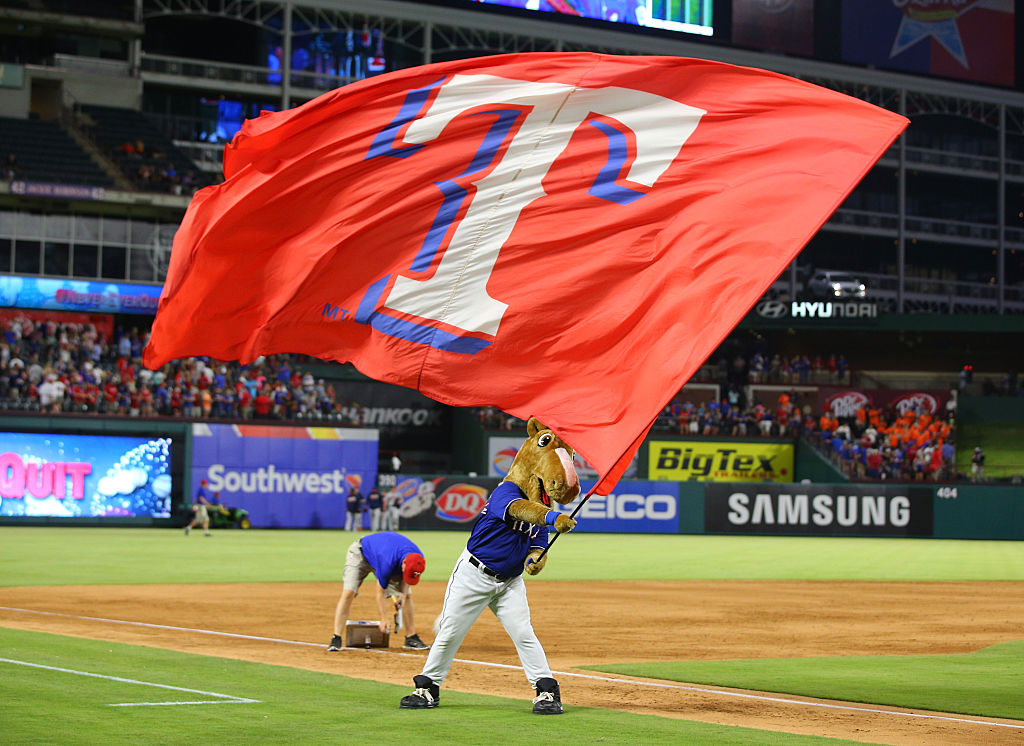On April 11, 1994, The Ballpark in Arlington, now known as Globe Life Park, hosted its first Texas Rangers’ game ever. That was barely over 22 years ago.
On May 20, 2016, just over 22 years after the stadium’s first game, the Rangers and City of Arlington announced a new stadium would be built and ready prior to the 2021 season. That means Globe Life Park would host Rangers’ games for just 26 years.
With Fenway Park and Wrigley Field standing the test of time 100-plus years after they opened, a 26-year lifespan for Globe Life Park seems ridiculous. However, in the modern era of baseball stadiums, it really isn’t.
The Atlanta Braves’ Turner Field was originally built for the 1996 Summer Olympics in Atlanta, and became the home of the Braves a year later in 1997. On November 11, 2013, the Braves announced only 20 years after their first game at Turner Field, they would be moving out for a brand new ballpark. That new stadium, SunTrust Park, is nearly finished and will be ready for the 2017 season.
So when you look at the numbers and years, the Rangers will have played more seasons at Globe Life Park than the Braves at Turner Field. However, there are two big differences as to why the teams are leaving their current parks after such short stints:
1. Turner Field in Atlanta is old and drastically needs new improvements: John Schuerholz, the Braves’ Vice Chairman, has stated Turner Field would need $350 million in renovations to come close to what the MLB standard is for stadiums today. This would be split up with $150 million going towards structural improvements and $200 million towards the fan experience.
2. Globe Life Park gets hot: It gets hot in Texas and everyone knows that, whether they’ve been to Texas or not. The one overlying theme of the Rangers’ new stadium proposal is that it’ll have a retractable roof and climate control settings to keep fans and players cool. The current stadium does not have a retractable roof or roof at all, thus leading to hot days in North Texas watching baseball. But if that’s the only big issue and fans are still flocking to games, is it really necessary to build a new stadium?
According to a WFAA News 8 report, it isn’t because the current stadium isn’t well suited for MLB games, but the new stadium would cost taxpayers a lot more than the Rangers or Arlington Mayor Jeff Williams care to admit.
The original proposal that was made public last month stated the new park would cost $1 billion and the price tag would be split evenly “50-50” between the taxpayers and Rangers’ organization. However, a WFAA investigation uncovered a special deal in the contract would result in the taxpayers picking up 80% of the bill while the Rangers cover the final 20%. That’s a big difference.
This all centers around the unanimously approved “Master Agreement” drawn up by the Arlington City Council and Texas Rangers. This would have voters increase taxes on sales, car rentals, and hotel occupancy taxes, the same plan drawn up for the public money given to the Dallas Cowboys to build AT&T Stadium.
That plan doesn’t sound terrible at face value because it’s mostly effecting tourism taxes such as car rentals and hotel rooms. But then WFAA dug deeper.
“But an analysis by WFAA-TV reveals that besides extending a half-cent sales tax, and levying hotel and car rental taxes, the approved agreement also includes millions of dollars of additional tax revenues that could flow to the Rangers.
Tucked in the agreement is a clause called the “admissions and parking tax” that allows for a 10 percent surcharge on event tickets and up to $3 additional surcharge on parking. State law allows cities to collect and use the taxes to build their stadiums. Arlington’s agreement, however, allows the Rangers to use the admissions and parking tax revenues to help pay their half of the construction costs.”
This is where the extra 30% of the taxpayer bill comes from. The money fans would use to pay for ticket and parking taxes would be then repurposed by the Rangers towards their portion of the bill.
What makes this more confusing, is this money would supposedly be brought in after the new stadium opens. In short, here’s a step-by-step breakdown of how that would work:
1. Team and City build the new stadium and split the bill 50/50 while the Rangers agreed the stadium life is 30 years.
2. Over those 30 years, the Rangers bring in $10 million a year in extra money on ticket and parking taxes.
3. At the end of those 30 years, the ticket and parking taxes fans would pay the Rangers ends up totaling $300 million. That $300 million would then be used by the Rangers towards paying off the stadium.
Even though the Rangers would originally have to pay $500 million, they would earn $300 million of that back through hidden parking and ticket taxes the city and team didn’t originally want to make public.
“If it really is a tax and could be used by the municipality, then in essence it’s just transferring revenue from the public sector to the private sector,” Rick Eckstein, a Villanova University professor who studies sports stadium economics, told WFAA.
“There’s a sleight of hand here. There’s verbal gymnastics going on,” Eckstein added. “It’s relatively unprecedented in terms of stadiums I’ve studied over the last 20 years.”
Ironically enough, when Professor Eckstein spoke with WFAA, he said there was only one other instance he could remember where a stadium and city agreed to such a deal. That stadium is across the street from Globe Life Park and is the home of the Dallas Cowboys, AT&T Stadium.
WFAA showed records in its live report it obtained outlining how the Cowboys and City of Arlington agreed on a similar deal. The way it breaks down for Jerry Jones’ team is they rake in an extra $16.5 million a year from parking and admission taxes. That means over the last seven years, Jones has collected an extra $116 million dollars in taxpayer money. Over the 30-year life deal of AT&T Stadium, Jones will have picked up an extra $500 million dollars.
AT&T Stadium cost $1.3 billion to build. Of that original $1.3 billion dollar price tag, the City of Arlington gave $325 million plus interest and the NFL gave a $150 million loan, while Jones and the Cowboys covered the rest.
That breaks down to: Cowboys – roughly 63%, Arlington – roughly 25%, NFL – roughly 12%. However, the Cowboys had to pay back the NFL’s portion, meaning their original contribution before the extra parking and admission taxes was around 75% compared to the City of Arlington’s 25% of the original $1.3 billion.
But what happens to those percentages when you factor in the $500 million the Cowboys are raking in with parking and admission taxes? At the end of the day once the stadium is completely paid off, the Cowboys will have put in roughly just $475 million (roughly 36% of the original bill) while the taxpayers will have contributed the other $825 million (roughly 64% of the original bill).
You think the Cowboys picking up 36% of the $1.3 billion dollar tab is bad while the city covers the other 64%? According to WFAA, that doesn’t come anywhere close to the 80%/20% split the Rangers are proposing.
“It is one of the worst public projects anyone could imagine,” Robert Baade, an economist at Lake Forest College in Illinois, told WFAA.
“This is all about not physical obsolescence. It’s really about economic obsolescence,” said Baade, who studies the economic impact of sports stadiums. “So who derives the benefits from building this new stadium? And it comes as no surprise to anyone: the primary beneficiaries are owners and players… It means an increased value for the franchise. It means more money for the owners and players.”
WFAA spoke with Arlington resident Jim Runzheimer, who is one of many to oppose the new stadium:
“That’s phenomenal; that’s mind boggling,” Runzheimer said. “This is a total giveaway by the taxpayer to a private business that does not need any taxpayer assistance.”
WFAA News 8 also spoke to Arlington Mayor Jeff Williams about the deal and what they uncovered. Mayor Williams simply told them:
“No, we are not giving away anything to the Rangers,” Mayor Williams said. “We are investing with the Rangers.”
At the end of the report, Investigative Reporter Brett Shipp compares the deal to what happened in Miami with the Miami Marlins and Jeff Loria. WFAA will be doing a report on that deal and how it compares to the Rangers’ proposed plan this Thursday.







